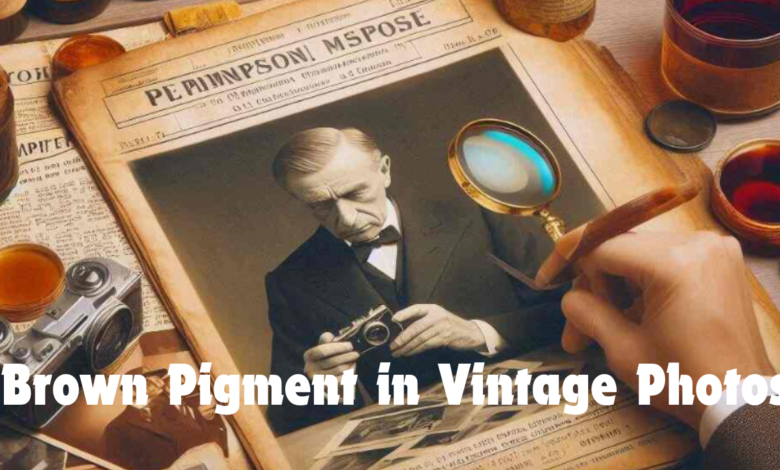The Significance of Brown Pigment in Vintage Photos

Brown pigment in vintage photos often evoke a sense of nostalgia, capturing moments from a bygone era in sepia tones and shades of brown. The use of brown pigment in vintage photos in these photographs plays a crucial role in not only preserving historical moments but also in understanding the technology and artistic choices of the past.
What is Brown Pigment in Vintage Photos?
In the context of vintage photography, brown pigment in vintage photos refers to the toning or coloring process applied to black-and-white photographs. This technique was commonly used in the late 19th and early 20th centuries to enhance the aesthetic appeal and longevity of photographic prints.
History of Brown Pigment Usage
The practice of using brown pigment in vintage photos dates back to the early days of photographic printing processes. Initially, photographs were monochromatic, capturing scenes in shades of black, white, and gray. However, photographers and artists soon began experimenting with toning techniques to add warmth and depth to their images.
Types of Brown Pigment
There are several methods and substances used to create Brown pigment in vintage photos tones:
- Sepia Toning: One of the most well-known techniques, sepia toning involves treating a black-and-white print with a solution containing sepia pigment. This results in a warm brown color that ranges from pale to deep depending on the concentration and duration of treatment.
- Selenium Toning: Another common method, selenium toning not only enhances the archival stability of the print but also adds a brownish-purple hue to the image. This process became popular in the early 20th century and was favored for its ability to impart rich tones and increase print longevity.
- Gold Toning: Less common but still notable, gold toning involves the use of gold chloride or other gold compounds to create brown or reddish-brown hues in the photograph. This method was prized for its ability to produce subtle, warm tones.
The Aesthetic and Emotional Impact of Brown Pigment
The choice to use brown pigment in vintage photos was not merely technical but also artistic. The warm, muted tones imparted a sense of timelessness and added a romantic quality to the captured scenes. This aesthetic choice influenced how viewers perceived the past, often imbuing it with a sense of warmth and sentimentality.
Cultural and Historical Significance
Beyond aesthetics, the use of brown pigment in vintage photos holds cultural and historical significance. These photographs serve as visual records of societal norms, fashion trends, architectural styles, and everyday life from different periods in history. They provide valuable insights into the past, allowing us to connect with our heritage and understand how people lived, worked, and interacted.
Preservation and Restoration Challenges
As time passes, vintage photographs undergo natural aging processes that can affect their appearance. brown pigment in vintage photos toning, while enhancing aesthetics, can also present challenges for preservation and restoration efforts. Conservationists and archivists must carefully balance the need to maintain the integrity of the original tones with the necessity of stabilizing the physical condition of the photograph for future generations.
Modern Applications and Revival
In contemporary photography and art, there has been a revival of interest in vintage techniques, including the use of brown pigment toning. Photographers and artists explore these methods not only as a homage to the past but also as a means of creating unique visual experiences in the digital age.
Conclusion
The significance of brown pigment in vintage photos extends beyond mere aesthetics; it represents a blend of artistic choice, technical innovation, and historical documentation. These photographs not only capture moments in time but also tell stories, evoke emotions, and connect us to our cultural heritage.
FAQs about Brown Pigment in Vintage Photos
- Why was brown pigment in vintage photos?
Brown pigment, such as sepia, was used to enhance the aesthetic appeal and longevity of black-and-white photographs.
- How does brown pigment affect the preservation of vintage photos?
While it enhances aesthetics, brown pigment in vintage photos toning can pose challenges for preservation due to its chemical composition.
- What are some famous examples of brown pigment in vintage photos?
Many iconic portraits and historical photographs, including those from the 19th and early 20th centuries, are toned with sepia or other brown pigments.
- Is brown pigment toning still used in modern photography?
Yes, some photographers use traditional toning techniques to create vintage-style prints, while others simulate these effects digitally.
- What is the difference between sepia and other types of brown pigment toning?
Sepia toning produces a warm brown color, whereas selenium and gold toning can create varying shades of brown with different visual effects.




